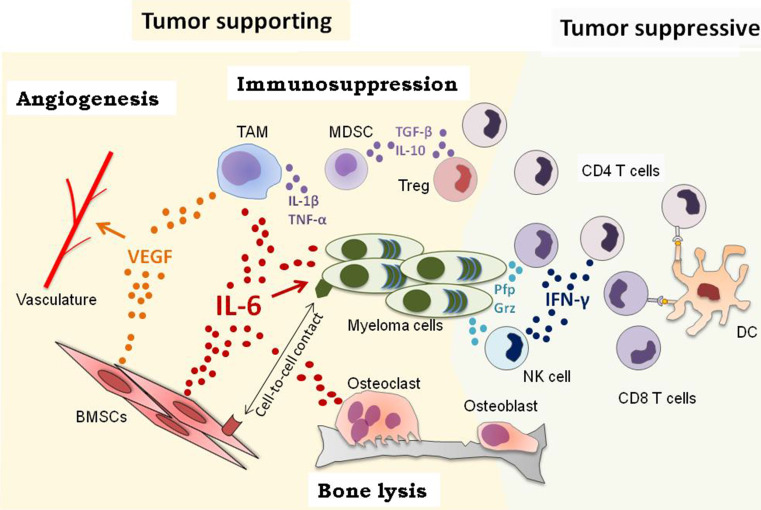Fig. 1.
The MM BM microenvironment. Myeloma microenvironment include bone marrow stromal cells (BMSCs), bone forming (osteoblasts) and resorbing (osteoclasts) cells, the vasculature and immune cells. Reciprocal interactions between BMSCs and MM cells involve cell-to-cell contacts and soluble factors. BMSCs are the main source of IL-6, which is also produced by osteoclasts, tumor associated macrophages (TAMs) or MM cells. IL-6 promotes myeloma cell proliferation, survival and drug resistance. In addition, BMSCs and TAMs secrete vascular endothelial growth factor (VEGF) and thereby favor angiogenesis. Direct and indirect interactions involving MM cells, osteoblasts and osteoclasts imbalance the bone remodeling process and result in bone lysis. Myeloid derived suppressor cells (MDSCs) or regulatory T cells (Tregs) secrete immunosuppressive factors contributing to MM escape from the immune system. Dendritic cells (DCs) prime CD4 and CD8 T cells. Depending on their polarization, CD4 T cells either promote or inhibit tumor growth. IFN-γ secretion by T cells and NK cells may limit MM progression. Furthermore, CD8 T cells and NK cells directly kill tumor cells by releasing cytotoxic granules containing perforin (pfp) and granzymes (Grz)

